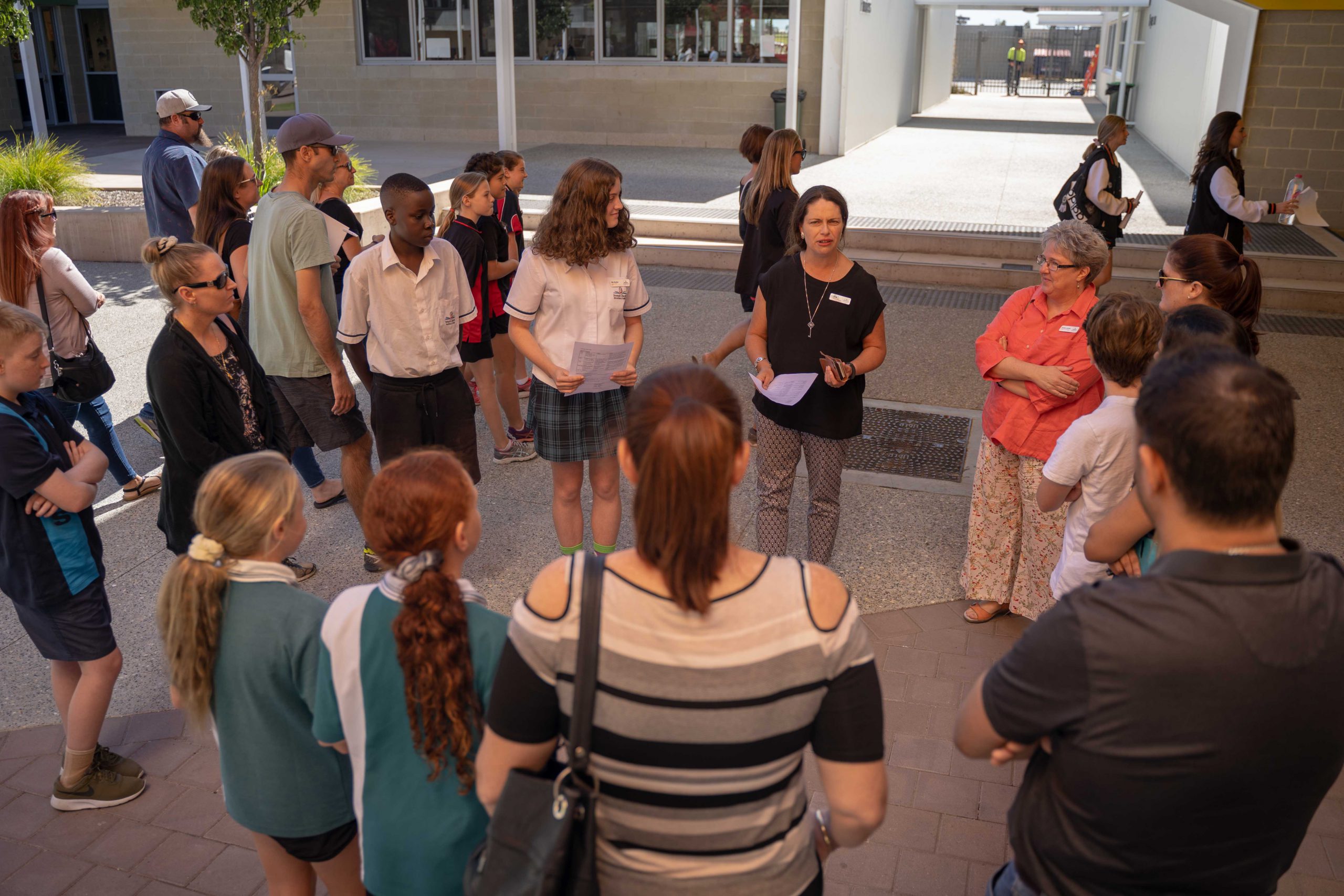Physics (ATAR)
Course Code: AEPHY/ATPHY
Domain: Science
Timetable: Semester 1 and 2
Length of course: 2 Years
Unit Information
Physics is a fundamental science that endeavours to explain all the natural phenomena that occur in the
universe. Its power lies in the use of a comparatively small number of assumptions, models, laws and
theories to explain a wide range of phenomena, from the incredibly small to the incredibly large. Physics has
helped to unlock the mysteries of the universe and provides the foundation of understanding upon which
modern technologies and all other sciences are based.
The Physics (ATAR) course uses qualitative and quantitative models and theories based on physical laws to
visualise, explain and predict physical phenomena. Models, laws and theories are developed from, and their
predictions are tested by, making observations and quantitative measurements. In this course, students
gather, analyse and interpret primary and secondary data to investigate a range of phenomena and
technologies using some of the most important models, laws and theories of physics, including the kinetic
particle model, the atomic model, electromagnetic theory, and the laws of classical mechanics.
Students investigate how the unifying concept of energy explains diverse phenomena and provides a
powerful tool for analysing how systems interact throughout the universe on multiple scales. Students learn
how more sophisticated theories, including quantum theory, the theory of relativity and the Standard
Model, are needed to explain more complex phenomena, and how new observations can lead to models and
theories being refined and developed.
Students learn how an understanding of physics is central to the identification of, and solutions to, some of
the key issues facing an increasingly globalised society. They consider how physics contributes to diverse
areas in contemporary life, such as engineering, renewable energy generation, communication,
development of new materials, transport and vehicle safety, medical science, an understanding of climate
change, and the exploration of the universe.
Studying senior secondary science provides students with a suite of skills and understandings that are
valuable to a wide range of further study pathways and careers. Studying physics will enable students to
become citizens who are better informed about the world around them and who have the critical skills to
evaluate and make evidence-based decisions about current scientific issues. The Physics (ATAR) course will
also provide a foundation in physics knowledge, understanding and skills for those students who wish to
pursue tertiary study in science, engineering, medicine and technology.
Year 11
Unit One
An understanding of heating processes, nuclear reactions and electricity is essential to appreciate how global
energy needs are met. In this unit, students explore the ways physics is used to describe, explain and predict
the energy transfers and transformations that are pivotal to modern industrial societies. Students investigate
heating processes, apply the nuclear model of the atom to investigate radioactivity, and learn how nuclear
reactions convert mass into energy. They examine the movement of electrical charge in circuits and use this
to analyse, explain and predict electrical phenomena.
Contexts that can be investigated in this unit include technologies related to nuclear, thermal, or geothermal
energy, the greenhouse effect, electrical energy production, large-scale power systems,
radiopharmaceuticals, and electricity in the home; and related areas of science, such as nuclear fusion in
stars and the Big Bang theory.
Through the investigation of appropriate contexts, students understand how applying scientific knowledge
to the challenge of meeting world energy needs requires the international cooperation of multidisciplinary
teams and relies on advances in ICT and other technologies. They explore how science knowledge is used to
offer valid explanations and reliable predictions, and the ways in which it interacts with social, economic,
cultural and ethical factors.
Students develop skills in interpreting, constructing and using a range of mathematical and symbolic
representations to describe, explain and predict energy transfers and transformations in heating processes,
nuclear reactions and electrical circuits. They develop their inquiry skills through primary and secondary
investigations, including analysing heat transfer, heat capacity, radioactive decay and a range of simple
electrical circuits.
Unit Two
Students develop an understanding of motion and waves which can be used to describe, explain and predict
a wide range of phenomena. Students describe linear motion in terms of position and time data, and
examine the relationships between force, momentum and energy for interactions in one dimension.
Students investigate common wave phenomena, including waves on springs, and water, sound and
earthquake waves.
Contexts that can be investigated in this unit include technologies such as accelerometers, motion detectors,
global positioning systems (GPS), energy conversion buoys, music, hearing aids, echo locators, and related
areas of science and engineering, such as sports science, car and road safety, acoustic design, noise
pollution, seismology, bridge and building design.
Through the investigation of appropriate contexts, students explore how international collaboration,
evidence from a range of disciplines and many individuals, and the development of ICT and other
technologies have contributed to developing understanding of motion and waves and associated
technologies. They investigate how scientific knowledge is used to offer valid explanations and reliable
predictions, and the ways in which it interacts with social, economic, cultural and ethical factors.
Students develop their understanding of motion and wave phenomena through laboratory investigations.
They develop skills in relating graphical representations of data to quantitative relationships between
variables, and they continue to develop skills in planning, conducting and interpreting the results of primary
and secondary investigations.
Year 12
Unit Three
Field theories have enabled physicists to explain a vast array of natural phenomena and have contributed to
the development of technologies that have changed the world, including electrical power generation and
distribution systems, artificial satellites and modern communication systems. In this unit, students develop a
deeper understanding of motion and its causes by using Newton’s Laws of Motion and the gravitational field
model to analyse motion on inclined planes, the motion of projectiles, and satellite motion. They investigate
electromagnetic interactions and apply this knowledge to understand the operation of direct current
motors, direct current (DC) and alternating current (AC) generators, transformers, and AC power distribution
systems. Students also investigate the production of electromagnetic waves.
Contexts that can be investigated in this unit include technologies, such as artificial satellites, navigation
devices, large-scale power generation and distribution, motors and generators, electric cars, synchrotron
science, medical imaging, and related areas of science and engineering, such as sports science, amusement
parks, ballistics and forensics.
Through the investigation of appropriate contexts, students explore the ways in which models and theories
related to gravity and electromagnetism, and associated technologies, have developed over time and
through interactions with social, economic, cultural and ethical considerations. They investigate the ways in
which science contributes to contemporary debate about local, regional and international issues, including
evaluation of risk and action for sustainability, and recognise the limitations of science to provide definitive
answers in different contexts.
Students develop their understanding of field theories of gravity and electromagnetism through
investigations of motion and electromagnetic phenomena. Through these investigations, they develop skills
in relating graphical representations of data to quantitative relationships between variables, using lines of
force to represent vector fields, and interpreting interactions in two and three dimensions. They continue to
develop skills in planning, conducting and interpreting the results of primary and secondary investigations
and in evaluating the validity of primary and secondary data.
Unit Four
The development of quantum theory and the theory of relativity fundamentally changed our understanding
of how nature operates and led to the development of a wide range of new technologies, including
technologies that revolutionised the storage, processing and communication of information. In this unit,
students examine observations of relative motion, light and matter that could not be explained by existing
theories, and investigate how the shortcomings of existing theories led to the development of the special
theory of relativity and the quantum theory of light and matter. Students evaluate the contribution of the
quantum theory of light to the development of the quantum theory of the atom, and examine the Standard
Model of particle physics and the Big Bang theory.
Contexts that can be investigated in this unit include technologies, such as photo radar, fibre optics, DVDs,
GPS navigation, lasers, modern electric lighting, medical imaging, nanotechnology, semiconductors,
quantum computers and particle accelerators, and astronomical telescopes such as the Square Kilometre
Array. Other contexts may include black holes, dark matter, and related areas of science, such as space
travel and the digital revolution.
Through the investigation of appropriate contexts, students explore the ways in which these models and
theories, and associated technologies, have developed over time and through interactions with social,
economic, cultural and ethical considerations. They investigate the ways in which science contributes to
contemporary debate about local, regional and international issues, including evaluation of risk and action
for sustainability, and they recognise the limitations of science to provide definitive answers in different
contexts.
Through investigation, students apply their understanding of relativity, black body radiation, wave/particle
duality, and the quantum theory of the atom, to make and/or explain observations of a range of
phenomena, such as atomic emission and absorption spectra, the photoelectric effect, lasers, and Earth’s
energy balance. They continue to develop skills in planning, conducting and interpreting the results of
investigations, in synthesising evidence to support conclusions, and in recognising and defining the realm of
validity of physical theories and models.
Pathway Information
Tertiary
Workforce
Students undertaking this course may wish to consider tertiary studies in:
- Applied Physics
- Astrophysics
- Engineering
This course suits direct workforce entry into the following:
- Laboratory Worker
- Construction
Additional Information
Estimated Charges: $70



